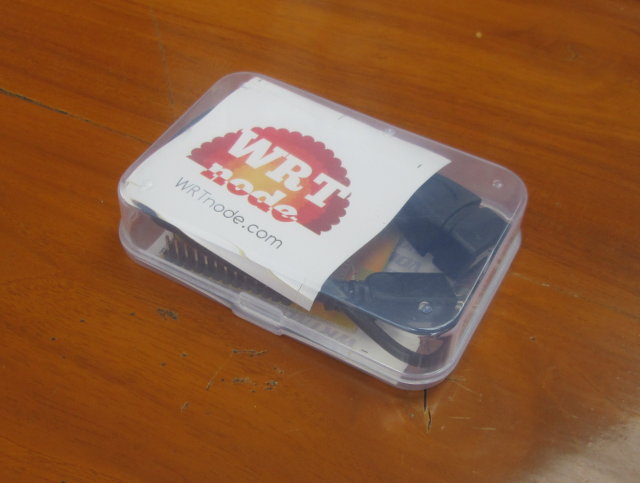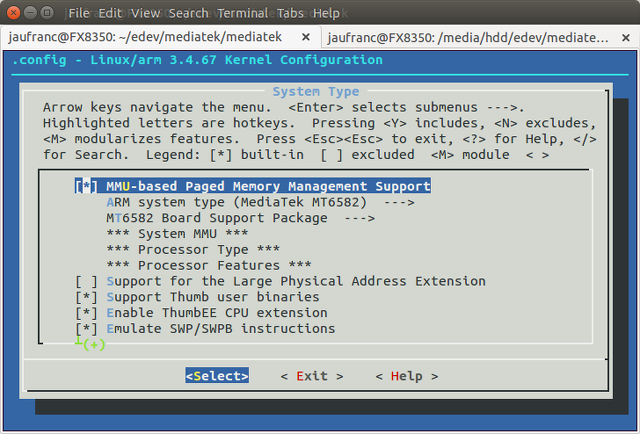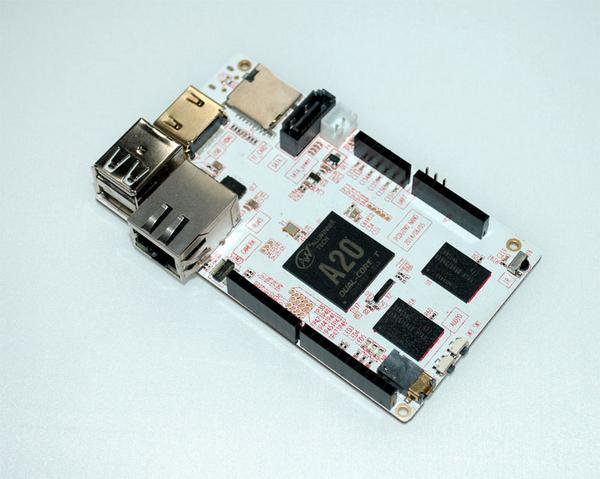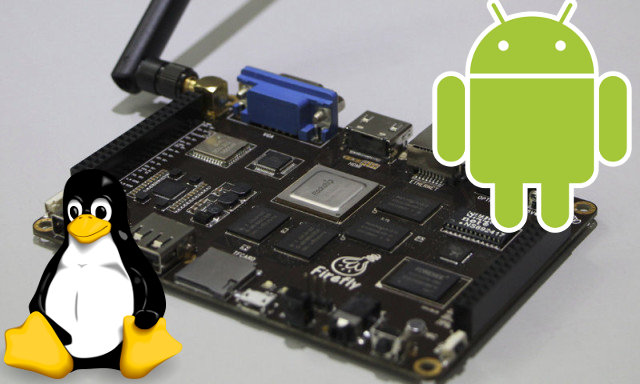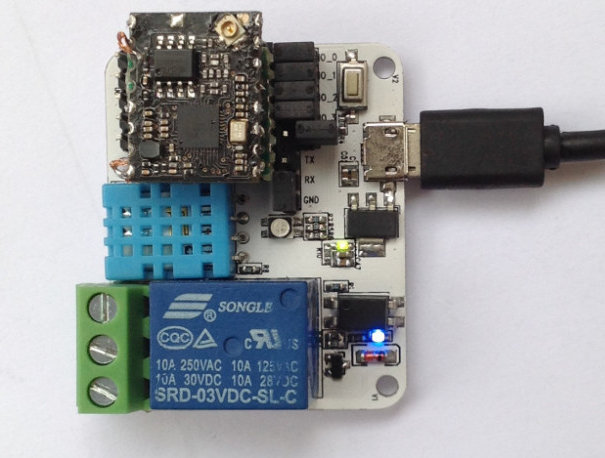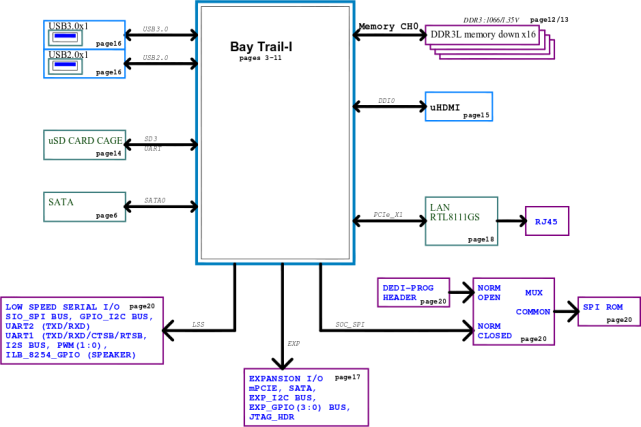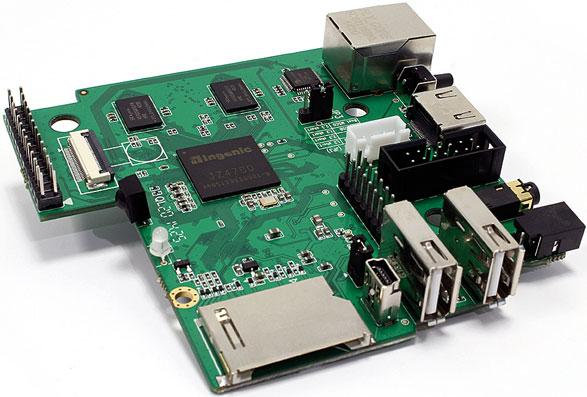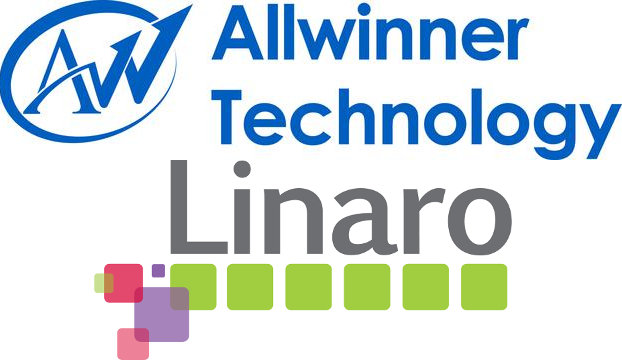Seeed Studio sent me two nice little boards that can be used for IoT development: WRTNode and LinkIt ONE. Today, I’ll show pictures of WRTNode and accessories, and go through the “starting guide“, and will test LinkIt ONE board a few days later. WRTnode Unboxing I’ve received WRTnode by Fedex, and the board is stored in a plastic box. Inside the box, you’ll find the board, a “special” USB used to power the board and as an OTG adapter, a piece of paper with useful links (Wiki), and some WRTnode stickers. Any micro USB to USB cable can be used to power the board, but this cable is useless to connect USB devices such as flash drives, webcams (OpenCV is supported), Bluetooth dongles, and so on. You could even connect a USB hub to connect multiple USB devices as shown below. I’ve also taken a picture of both sides of […]
Mediatek Releases Linux Source Code for Android One Smartphones
Android One is a program by Google aiming at bringing low cost smartphones to the emerging markets with firmware updates to the latest Android version guaranteed for two years. Three phones part of Android One program have recently been announced for the Indian market: Micromax Canvas A1, Karbonn Sparkle V, and Spice Dream Uno, and Android One phones will be available in Indonesia, the Philippines and South Asia (Bangladesh, Nepal, Pakistan, and Sri Lanka) by the year of the year. The three phones currently available sell for $100, which based on the specs (quad core processor, 1GB RAM, 4GB flash, 4.5″ display) is not exactly an aggressive pricing compared to what is already available from Aliexpress, but the main advantage here is clearly Google support with promised firmware updates, and currently Android 4.4.4. All these phones appear to be powered by Mediatek MT6582, and company decided to release the Linux […]
$39 PcDuino3 Nano ARM Linux Development Board Features HDMI, SATA, Gigabit Ethernet, Arduino Headers…
Linksprite recently announced PcDuino3 Nano development board powered by AllWinner A20 dual core processor. PcDuino3 Nano is, as you can expect, a smaller and cheaper version the company’s PcDuino3 board without Wi-Fi module, LVDS header, and I2S interface. The board does not appear to support Li-Po batteries either, but it adds one extra USB host port compared to its big brother. pcDuino3 Nano specifications: SoC – AllWinner A20 dual core ARM Cortex A7 @ 1.0 GHz with Mali 400MP2 GPU System Memory – 1GB DRAM Storage – 4GB NAND Flash, SATA connector, and microSD card slot (up to 32GB) Video Output – HDMI 1.4 with HDCP support Audio Out – 3.5mm analog audio interface Connectivity – Gigabit Ethernet USB – 2x USB host, 1x USB OTG Expansion Headers – Arduino UNO extension interface with 14xGPIO, 2xPWM, 6xADC, 1xUART, 1xSPI, 1xI2C. Camera – MIPI camera support Misc – IR receiver Power […]
Rockchip RK3288 Android 4.4.2 SDK and Schematics Released for Firefly Board
Firefly-RK3288 development board was first announced in July. I still don’t have news about availability nor pricing, but the T-Firefly website launched yesterday. They seem do have a nice Wiki, but unfortunately everything is currently in Chinese, except when you go to the download page. You’ll find firmware upgrade_tool for Linux and Windows, the USB drivers for rooting and firmware update, firmware images (Android 4.4.2, Ubuntu 14.04, and dual boot), the board schematics (PDF), and Android KitKat 4.4.2 SDK with U-Boot, Linux, and Android source code, some documentation, XBMC apk (no source) with H.265 hardware decode support for MP4, MOV and MKV container formats. The SDK is available on Bitbucket. I planned to test it, but unfortunately my network connection is very slow (and unstable) to this server, and I failed to retrieve it with git clone. The company also posted the build instructions in Chinese in their website, but […]
xWifi Open Source Hardware Wi-Fi Module and Dock for the Internet of Things (Crowdfunding)
For some reasons, Wi-Fi modules are pretty popular this year. After modules such as VoCore, AsiaRF AWM002, and ESP8266, here’s come xWifi. This module is based on Mediatek MT7681 SoC which includes a TCP/IP stack like Espressif ESP8622 or TI CC3300, so it won’t run OpenWRT like VoCore or AsiaRF modules. The module only consumes about 350mW during transfer, it will be open source hardware, and the xWifi module plus a dock with a 10A relay, a humidity and temperature sensor, and a LED will go for as low as $17. xWifi module only specifications: SoC – Mediatek MT7681 802.11 b/g/n SoC with 32-bit RISC CPU. Support for Client/softAP mode. Package size 5×5 mm Storage – 512KB SPI Flash (for firmware) I/Os via headers: UART and SPI interfaces. 5x GPIOs PWM Power – 3.3V, GND Power Consumption – ~70mA @ 5V (during RX active) Dimensions – 14 x 17 mm The […]
MinnowBoard MAX Schematics, Board layout, Gerber, and BoM Released
MinnowBoard MAX (aka MinnowBoard2) is an embedded board powered by Intel Atom Bay-Trail-I E3815 (single core) or E3825 (dual core) processor, with 1 to 2GB RAM, SATA II, USB 3.0, Gigabit Ethernet ports, and more. The board currently officially supports four operating systems: Debian GNU/Linux, Linux built with the Yocto Project, Android 4.4, and Windows 8.1. One of its main selling point is the price as the single core version sells for $99, and the dual core version for $129, rivalling in price with equivalent ARM based development boards. It’s also an open source hardware board, and as it’s now about to ship, CircuitCo released all hardware files under a Creative Commons CC-BY-SA license, allowing anybody with the right skills to create a clone, or their own hardware. Here are the files that have been released: Schematic (PDF) Schematic (Orcad DSN) Board Layout (Allegro BRD) Gerbers Bill of Materials Schematics […]
MIPS Creator CI20 Development Board Formally Announced, Free to Selected Developers
Earlier this month, I discovered MIPS Creator CI20 development board based on Ingenic JZ4780 dual core MIPS processor thanks to one of my reader. Imagination Technologies has now launched the board, which will run Debian 7 first, soon support Android 4.4 and others Linux distributions, and the company places their MIPS board as a competitor to the popular ARM based boards such as the Raspberry Pi and BeagleBone Black. This is the first board part of Prpl initiative for open source Linux and Android software for the MIPS architecture. As a reminder, I’ll list the hardware specifications again: SoC – Ingenic JZ4780 dual core MIPS32 processor @ 1.2 GHz with Imagination PowerVR SGX540 GPU. 32kI + 32kD per core, 512K shared L2. System Memory – 1GB DDR3 Storage – 8GB NOR flash, 1x SD card slot, 1x SD card slot via expansion Video Output – HDMI up to 1080p Audio […]
Interview with Allwinner Regarding their Linaro Membership
Since Allwinner has joined the Linaro Digital Home Group earlier this year, many people, including myself, have wondered what it means in terms of Linux support, and the engagement with the open source community. Following up on an idea from a regular reader, I’ve decided to asked a few questions to Ben-El Baz, marketing manager at Allwinner, and Linaro contact for Allwinner, which he kindly answered, and accepted to be published on CNX Software. CNXSoft: Why did Allwinner decide to join Linaro, and especially the Digital Home Group? Allwinner: One of our company’s goals is to be a technology leader. It’s ambitious but not too far-fetched given the background of our leadership and engineering team. There’s an extremely talented group of guys behind the scenes here! Leading is difficult unless you’re involved in collaborative organizations like Linaro that work on new technology. Joining Linaro is an opportunity for us to […]


